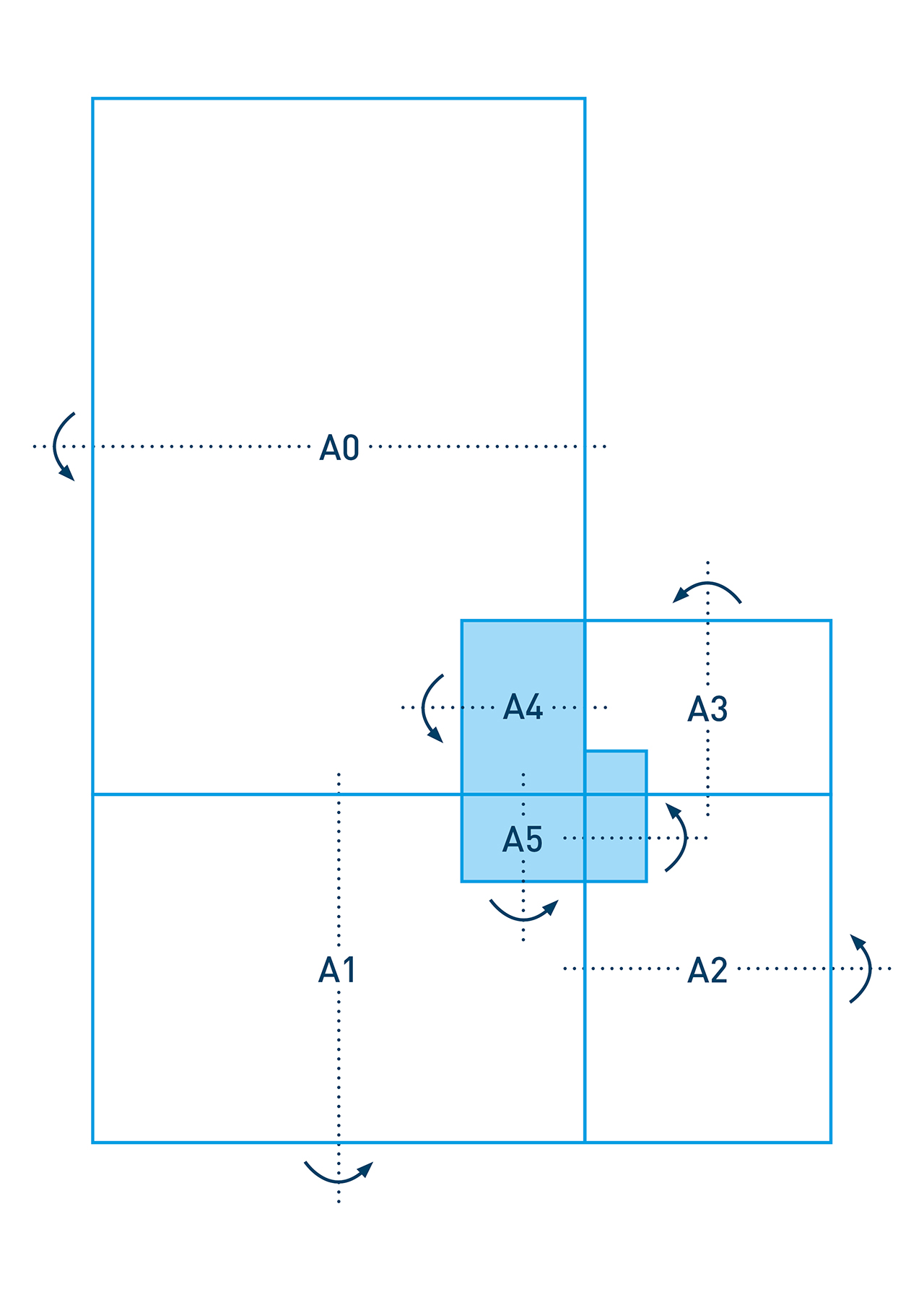Press
Happy birthday, A4!
Paper has been standardized according to the A-series for 100 years

© DIN
It fits in any printer, copier and folder — the world’s possibly best-known paper size is celebrating its 100th birthday. On 18 August 1922, the German Institute for Standardization (DIN) published the standard DIN 476 "Trimmed sizes of paper", and set a benchmark with sizes such as A4 and A5 that went on to become a model of success in almost all corners of the world. The specified dimensions have withstood the test of time to this day and are defined in the International Standard DIN EN ISO 216.
From a chaotic array of sizes through to a standard
Paper sizes have had a chequered history, with different approaches and specifications dating back to as early as the 14th century. In the late 18th century, the aspect ratio 1:√2 was proposed for the first time; a format that was apparently deemed as aesthetically pleasing, but which was to be soon forgotten again shortly afterwards. At the beginning of the 20th century, and after various developmental stages and attempts to standardize paper formats, the engineer Walter Porstmann finally worked out the basic principle that still applies today. His model is based on a base area of one square metre, which corresponds to size A0 (841 x 1189 millimetres). Halving this square metre along the long side will result in the next smaller A1 size, dividing it again will result in A2 and so on. The aspect ratio always remains the same. This series of sizes, based on halving each size to obtain the next lowest size, was finally adopted by consensus of all interested parties at DIN, defined in DIN 476, and published in August 1922. The first institution to apply this standard was the Directorate of the German State Railway in the autumn of 1923.
Now it is used throughout the world
Today, A4 size is familiar all over the world. The A-series formatting has an impact on much more than just paper. For example, it affects the dimensioning of filing trays, folders, covers, desk drawers, the depth and height of cupboard compartments, envelopes, and much more. Many magazines, brochures, catalogues and postcards are based on A-series sizes; standard billboards and advertising columns are also categorized according to them. The format sizes of sheet-fed printing presses, the cylinder widths and circumferences of web printing presses and the working widths of paper machines are also designed, following the edge trimming that is required for technical reasons, to produce A-series size products. There are of course exceptions to this rule: Other formats are sometimes used as a unique selling point for newspapers, magazines and books. In the USA, for example, letter format is the common format for paper sizes. "The standard for paper sizes is an early example of how a decision made according to the consensus principle has proven itself and become a global success. This principle still applies to standardization work at DIN today and aids us all in using standards to address the current issues of our age such as climate protection and digitalization," says Christoph Winterhalter, DIN Executive Board Chairman.